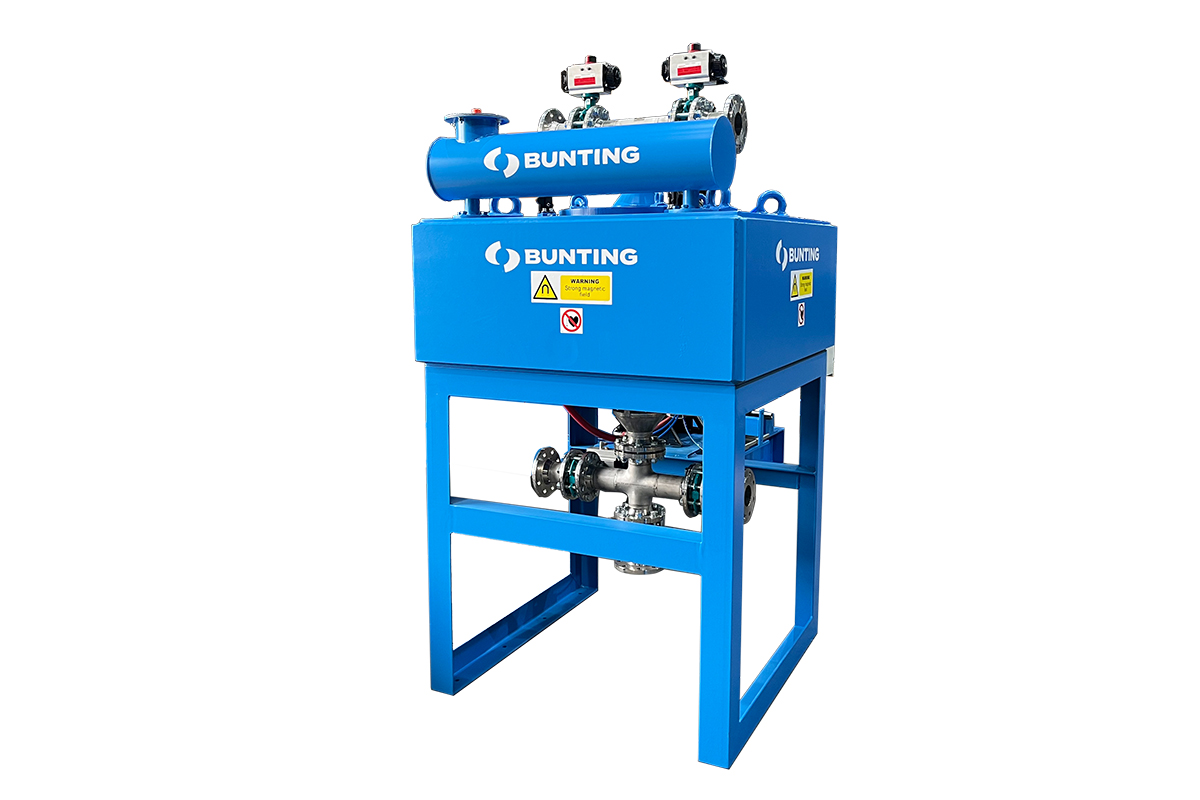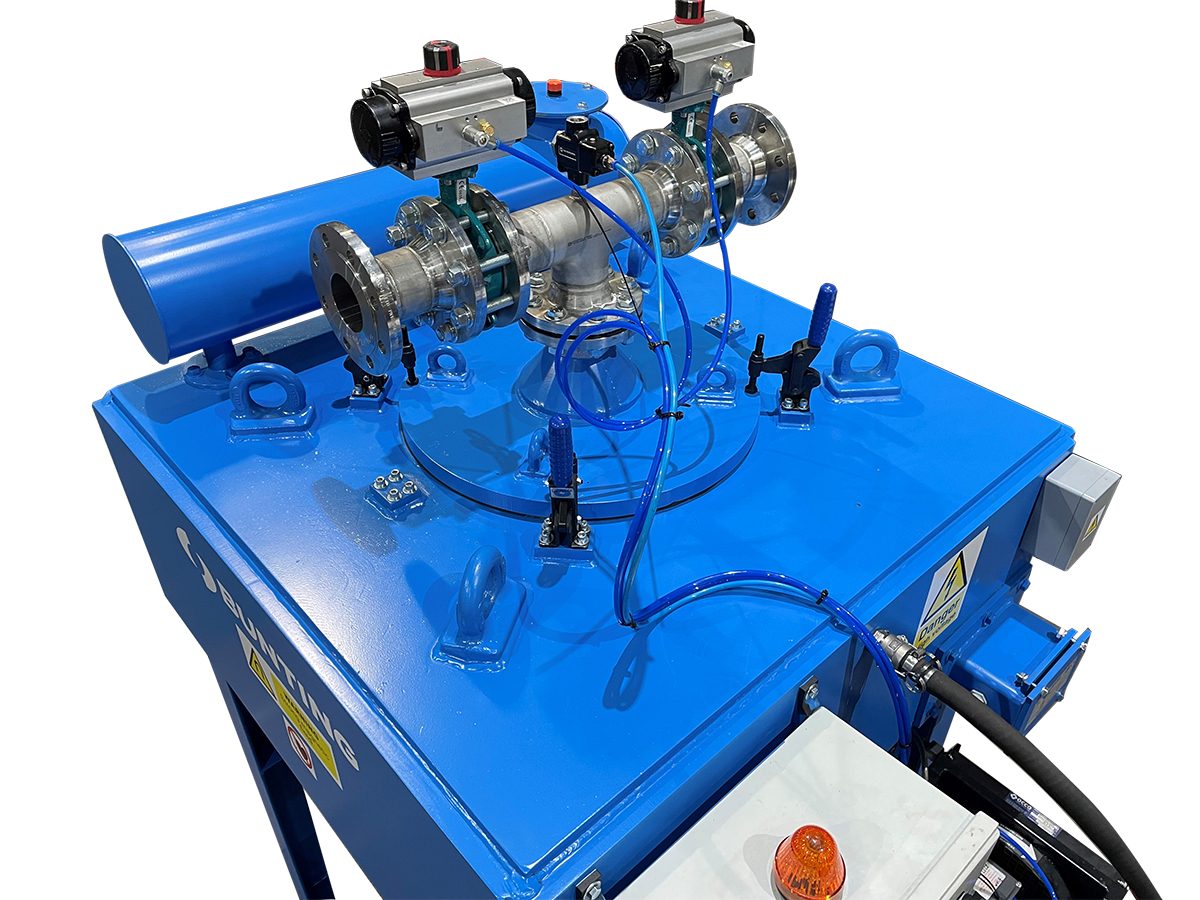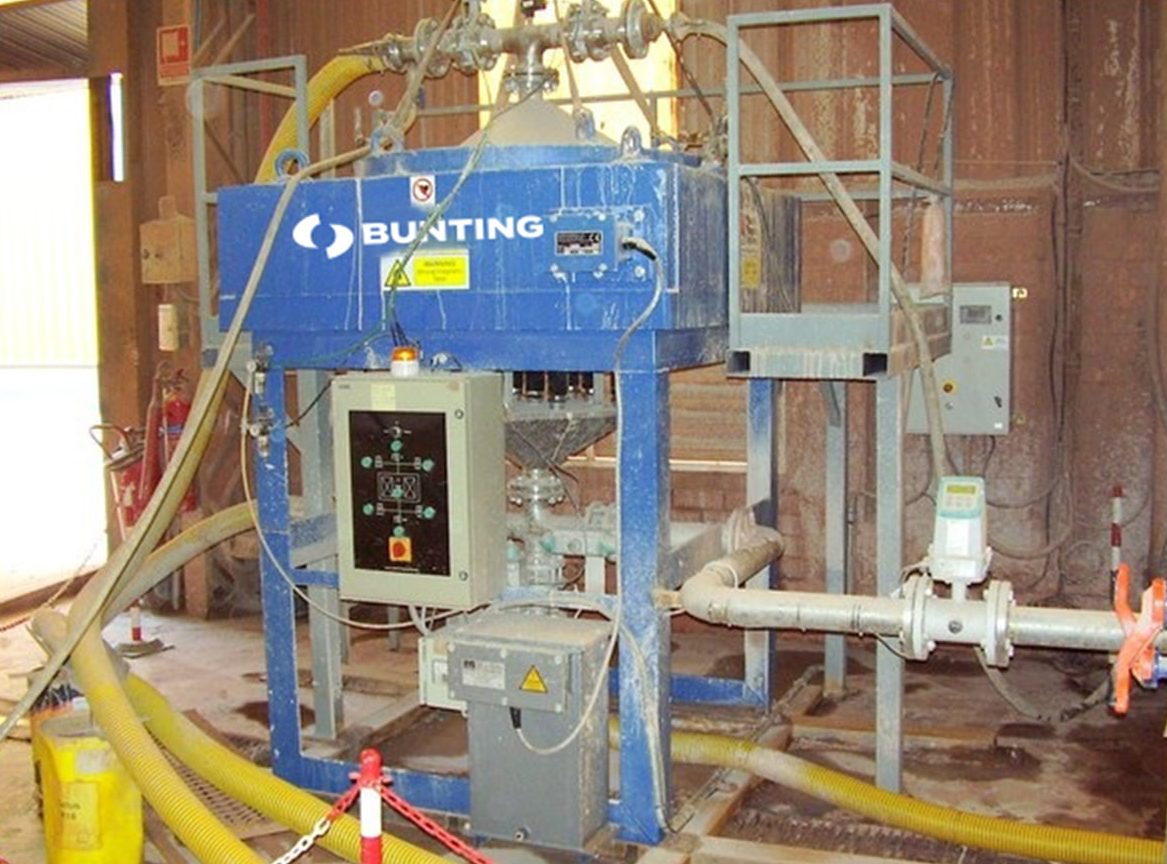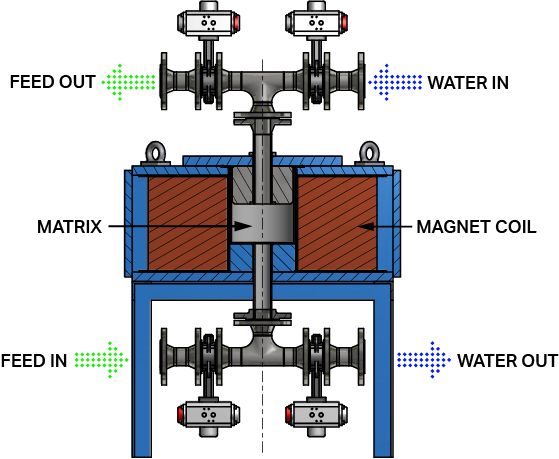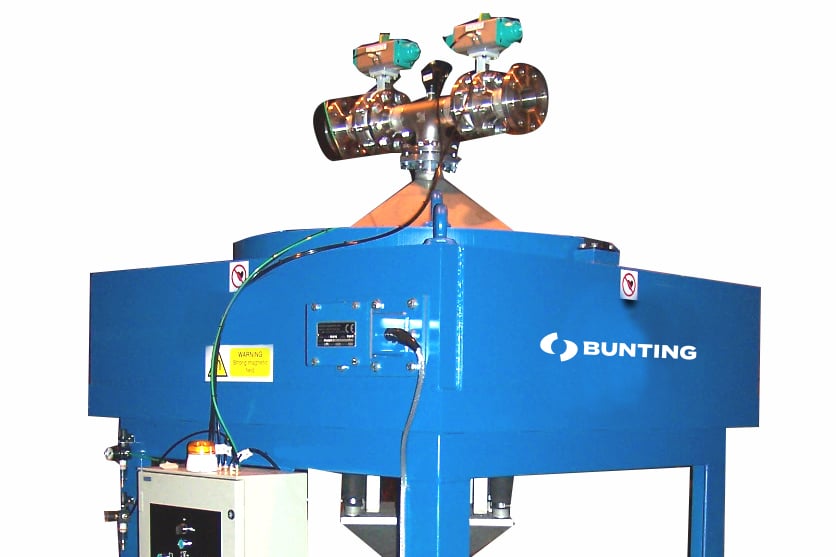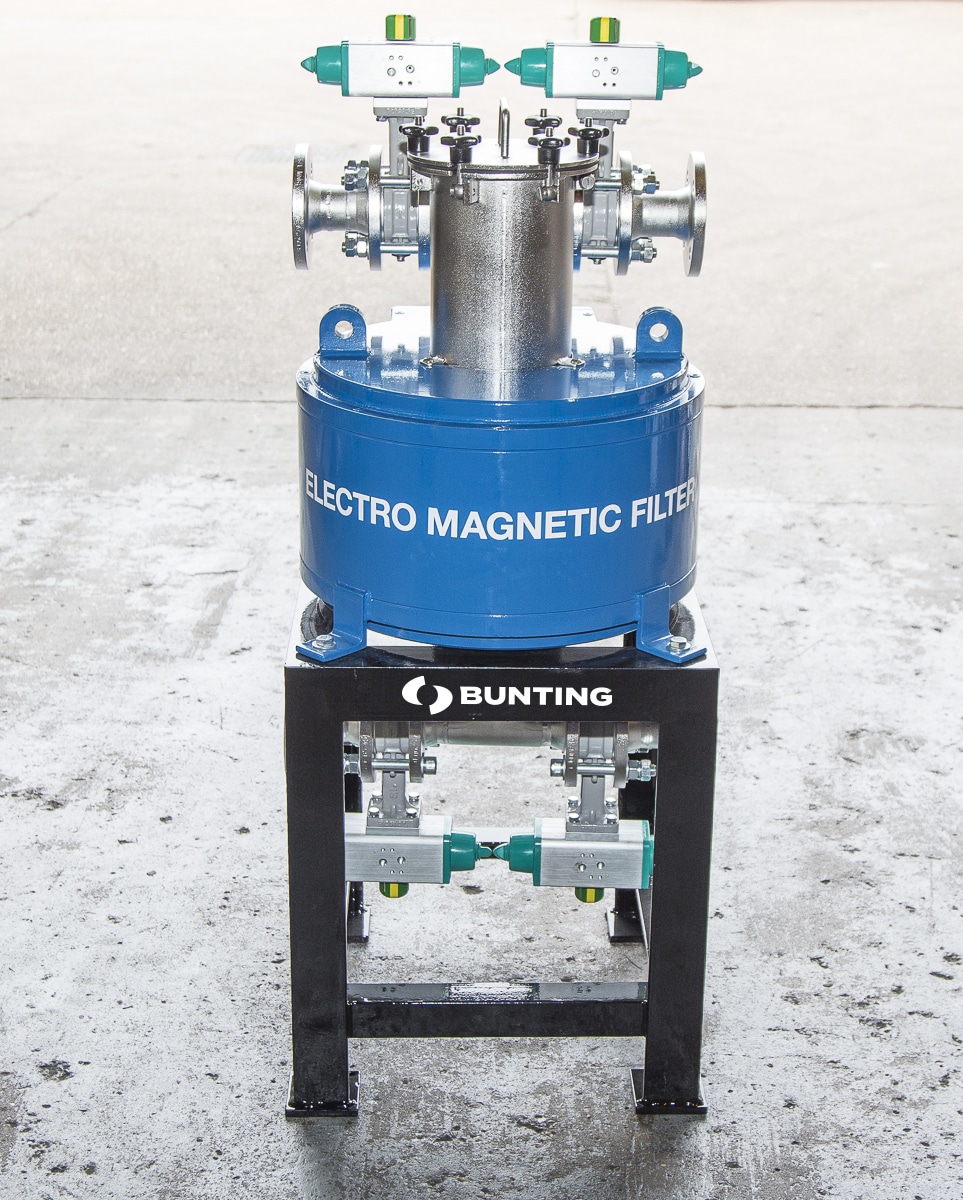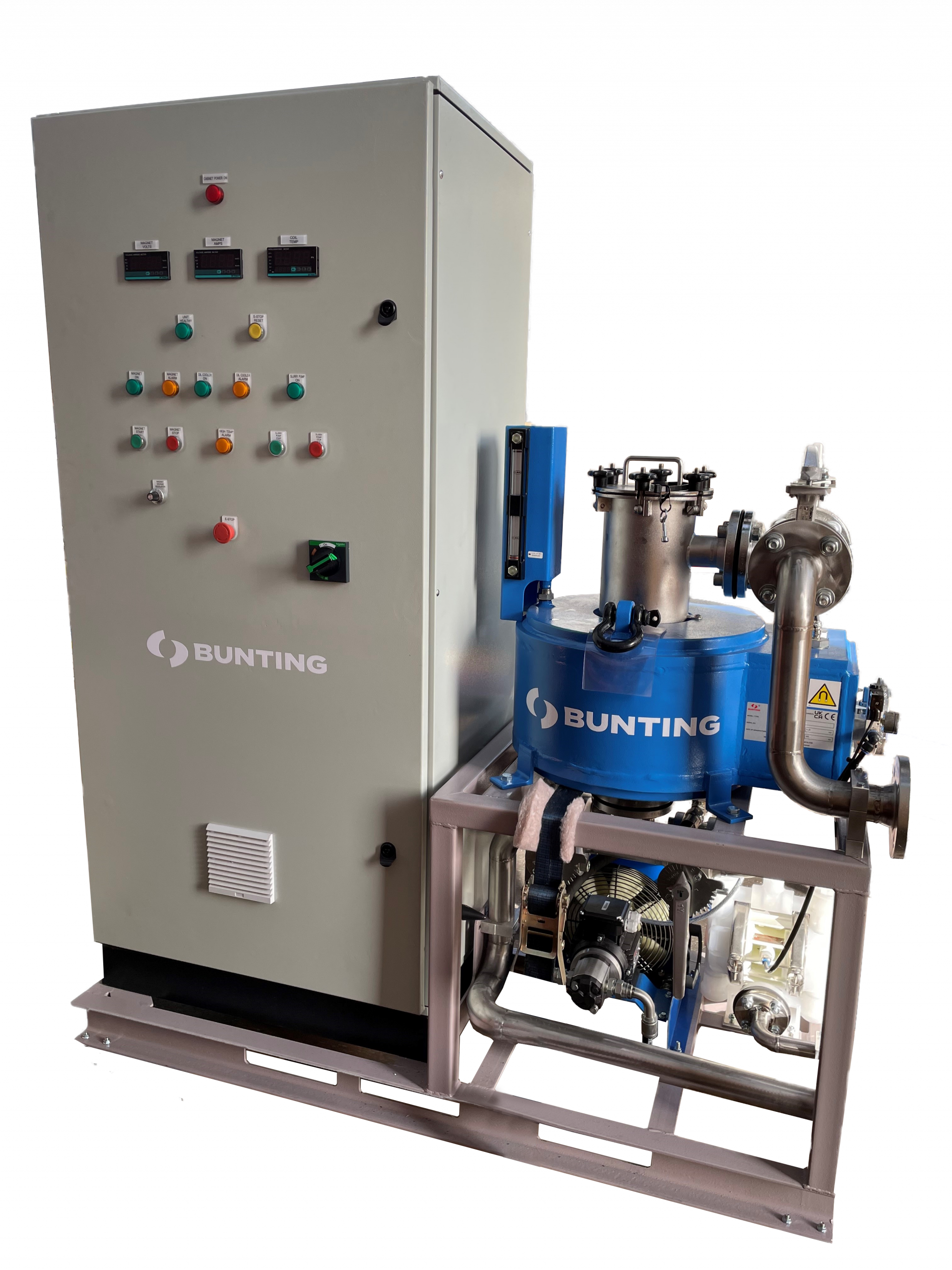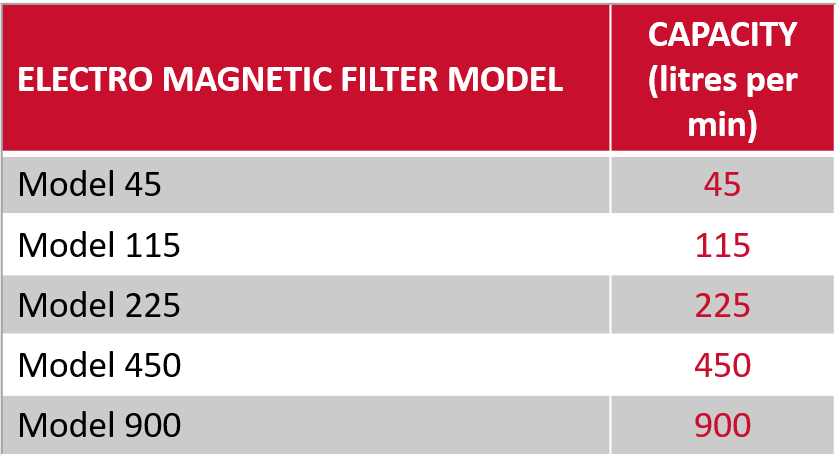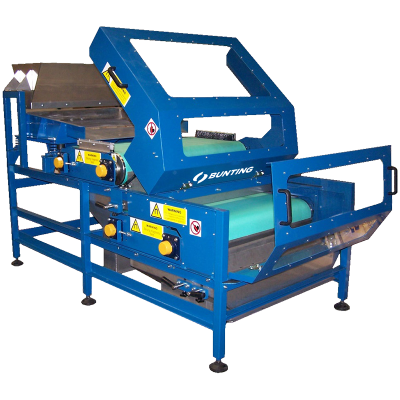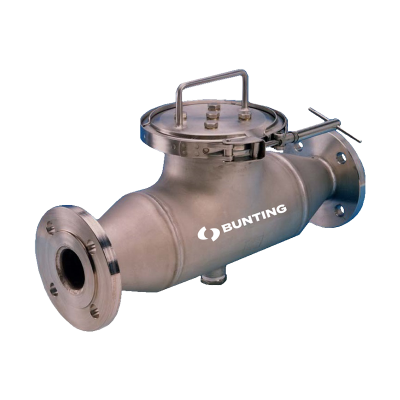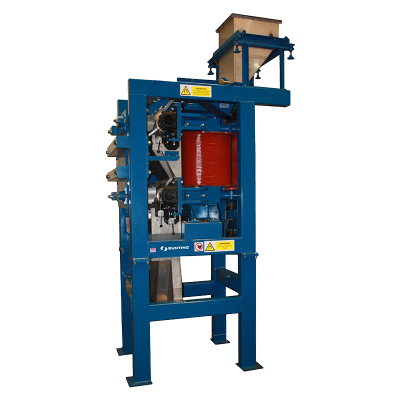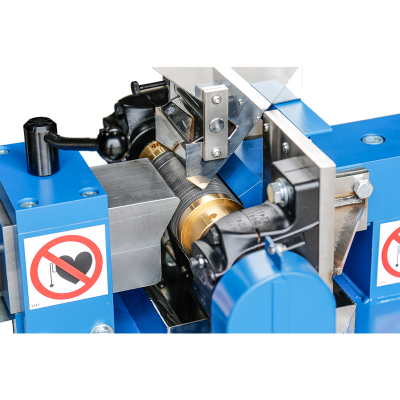Electro Magnetic Filters
The Electro Magnetic Filter produces a high-intensity magnetic field (upto 40,000 Gauss) to separate fine iron and paramagnetic minerals from liquids and slurries. The technology is widely used in the ceramics industry to remove problematic magnetic particles from slips and glazes. In the Mineral Processing industry, more powerful Electro Magnetic Filters can remove fine grinding iron and some paramagnetic minerals (e.g. Hematite) found in non-metallic minerals slurries. Electro Magnetic Filters are also used to remove free iron and scale from water in power stations, steelworks and water recycling plants.
Description
The Electro Magnetic Filter provides one of the most effective methods of continually removing problematic fine iron and paramagnetic minerals from ceramic slips and glazes, as well as industrial mineral slurries (e.g. Kaolin, Calcium Carbonate). The technology produces a higher separation efficiency than permanent magnetic separators such as Liquid Pipeline Separators and Tube Magnet configurations by generating significant background magnetic field strength in the canister (2,500 Gauss, 5,000 Gauss or 6,500 Gauss) and high magnetic field gradient on the matrix surface. The enhancement of the magnetic field on the matrix surface is 4 times the background field – e.g. a 6,500 Gauss background field will generate 26,000 Gauss on the matrix.
Electro Magnetic Filters consist of an electro magnetic coil positioned around a central hollow core containing a magnetic (400 series) stainless-steel matrix of various designs. The highly-efficient computer designed coil generates a high intensity magnetic field that becomes intensified on the points of the matrix creating the magnetic force needed to separate paramagnetic particles from the slurry.
The magnetic coil is either enclosed in a circular or rectangular steel casing designed to intensify the magnetic field into the hollow centre of the coil. Valves trees (for the product feed and exit as well as cleaning water and air) are mounted on the top and bottom to suit the application and installation.
Removal of the captured magnetics inside an Electro Magnetic Filter is either undertaken manually or automatically. For automatic operations, the process is managed through a separate control. Via the control, operators are able to:
- Set the cleaning frequency;
- Set the cleaning parameters;
A separate transformer rectifier is used to deliver power.
- Mineral Processing Lab High Intensity Electromagnetic Filter
- Getting Metal Out of Ceramic Sanitaryware
Operation
In operation, slurry is pumped up through the centrally-located matrix at a specified rate. Magnetically-susceptible particles are attracted to and held onto the points of the matrix, where the background magnetic field has been intensified.
Periodically, at a time dictated by the percentage of magnetics in the feed, the operation is stopped. The matrix then goes through a cleaning cycle:
Cleaning Cycle on a 6-Valve System:
- The feed valve and clean product exit valves are closed;
- The top air valve and central bottom discharge valve are opened, forcing slurry down and out of the canister whilst the magnet is on. This removes entrapped non-metallic product and is commonly reintroduced into the feed;
- The air valve closes and the magnet is turned off. The water valve opens. Captured magnetics are flushed out from the top with water and dumped via the central bottom discharge valve to waste;;
- The water and central bottom discharge valves are closed, the magnet turned on, and the feed valve and clean product exit valves are opened to restart the cycle;
Cleaning Cycle on a 4-Valve System
- The feed valve and clean product exit valves are closed;
- The water valve and waste valves are opened and the magnet is turned off removing the captured magnetics from the matrix and discharging into waste;
- Once clean, the water and waste valves close;
- Production resumes with the reopening of the feed and clean product exit valves;
For continuous processing in applications where cleaning is on a very frequent basis, two Electro Magnetic Filters are set-up in a ‘Flip-Flop’ arrangement, where one unit is cleaning whilst the other is processing.
There are several key product criteria to consider that significantly affect the separation performance. These include:
- Solids percentage (typically 20-40% by weight)
- Viscosity of the slurry
- Particle size range;(typically 0 – 500 microns). The particle size range will determine type of matrix used
- Percentage of free iron and paramagnetics in the slurry. This will determine the cycle time of the machine.
Models
Electro Magnetic Filters are available with three different background magnetic fields:
- 2,500 Gauss – removal of free iron
- 5,000 Gauss – removal of finer free iron and some paramagnetic minerals
- 6,500 Gauss – removal of very fine iron and paramagnetic minerals
There are two valve configurations, depending on the application:
- 4-valve
- 6 valve
Electro Magnetic Filter Models and Typical Throughputs
Applications
Electro Magnetic Filters provide enhanced separation of problematic magnetic particles and minerals and are used widely to:
- Clean ceramic glazes;
- Purify ceramic slips and bodies;
- Remove magnetics and paramagnetics (e.g. Hematite, Ilmenite, Chromite) from mineral slurries including:
- Silica sand;
- Feldspar
- Ball clay
- Kaolin
- Calcium Carbonate
- Talc
Bunting-Redditch offer controlled tests on laboratory-sized Electro Magnetic Filters at their Centre of Excellence in Redditch, UK. These tests confirm the separation capabilities in terms of percentage removal and the type of magnetic particles.
